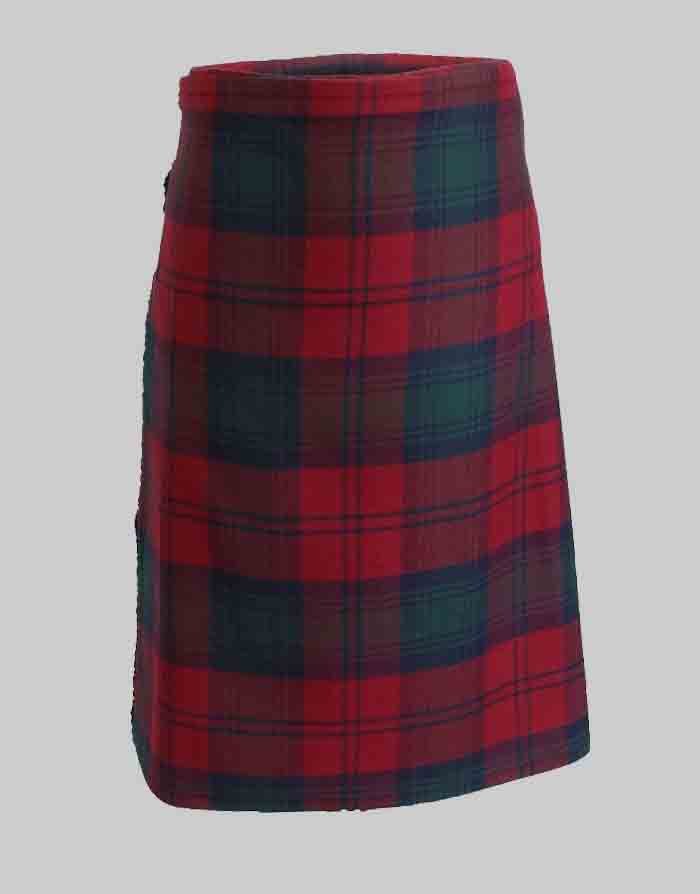About Lindsay Tartan Kilt
The Lindsay tartan kilt is a popular choice for those who wish to celebrate their connection to the Lindsay Clan. It is made of acrylic wool with leather straps and buckles, providing a combination of comfort, style, and functionality.
At Kiltandkilts, we feature a wide range collection of Tartan Kilts including Lindsay Tartan Kilt is sure to have something that matches your style.
What is the History of the Lindsay Clan?
The Lindsay Clan has a notable presence in both England and Scotland, with a history that spans centuries. They have made significant contributions to Scottish politics and have connections to royal families.
Origins: The Lindsays were prominent in both England and Scotland from the late 11th century. The name Lindsay most likely derives from the region of Lindsey in England, from where the family originated. The first known member of the family was Baldric de Lindesaya, a Norman who held lands in England and Normandy.
Migration to Scotland: The Lindsay name appears in the Scottish Borders in the 12th century. Sir Baldric de Lindsay’s sons, Sir Walter and William de Lindsay, accompanied David of Scotland, Earl of Huntingdon, to claim his throne. William’s son, William de Lindsay, held the lands of Crawford and became a prominent figure in Scottish politics.
Royal Connections: The Lindsays married into the Royal family in the 13th century, further solidifying their status and influence.
Edzell Castle: The Lindsay Clan is associated with Edzell Castle, a ruined 16th-century castle in Angus, Scotland. It was established by David Lindsay, 9th Earl of Crawford, and expanded by his son, Sir David Lindsay, Lord Edzell.
Cadet Branch: The Lindsays of the Mount is a cadet branch of the Byres line. Sir David Lindsay of the Mount, a member of this branch, is one of the most famous names in Scottish history.
What is the Importance of the Color in the Clan Lindsay Tartan?
The color scheme of the Clan Lindsay Tartan is significant and holds meaning within the tartan design.
Green: Green is often associated with nature, growth, and fertility. It can symbolize the connection to the land and the clan’s Scottish heritage.
Maroon, Burgundy, and Dark Blue: These deep, rich colors can represent strength, nobility, and tradition. They may symbolize the Lindsay Clan’s historical significance and their role in Scottish society.
Red: Red is a color often associated with bravery, courage, and loyalty. It may represent the clan’s warrior spirit and their commitment to their traditions and values.
Brown and Grey: These earthy tones can symbolize stability, resilience, and a connection to the natural world. They may reflect the clan’s ties to the land and their enduring presence throughout history.
Blue and Black: Blue and black colors can represent loyalty, integrity, and determination. They may signify the Lindsay Clan’s commitment to their family and their unwavering support for their fellow clan members.
What are the Occasions to Wear Lindsay Tartan Kilt?
Formal Events: The Lindsay Tartan Kilt is a popular choice for formal occasions such as weddings, ceilidhs, and other special events. Its traditional and elegant design adds a touch of Scottish heritage to the outfit, making it suitable for formal gatherings.
Heritage Events: The Lindsay Tartan Kilt is also suitable for heritage events where individuals celebrate their Scottish roots and cultural heritage. Whether it’s a Highland Games event or a gathering focused on Scottish traditions, wearing the Lindsay Tartan Kilt allows individuals to proudly display their connection to the Lindsay Clan.
Special Celebrations: The Lindsay Tartan Kilt can be worn to mark special celebrations and milestones in one’s life. Whether it’s a significant birthday, anniversary, or other memorable occasion, the kilt adds a touch of distinction and personal significance to the event.
Scottish Festivals: The Lindsay Tartan Kilt is a fitting choice for Scottish festivals and gatherings where individuals come together to celebrate Scottish culture, music, and traditions. It allows wearers to participate in the festivities while showcasing their clan affiliation.
Casual Outings: While the Lindsay Tartan Kilt is often associated with formal events, it can also be worn for casual outings or as part of everyday attire for those who wish to embrace their Scottish heritage on a regular basis.





